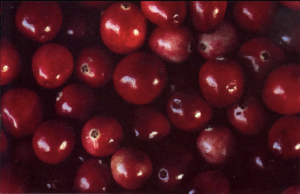The almond (Amygdalus Communis or Prunus Amygdalus) has consideration by some to be the original of the peach, but this is untenable. There are two species of almonds: bitter and sweet. The former has a bitter kernel for flavoring extracts and prussic acid. For the most part, it grows mostly in Mediterranean countries. Sweet or edible almonds have two classes: hard and soft shells. The soft-shell type produces edible almonds for commerce.
History Written In The Early Religious Texts
Almonds have been mentioned in the earliest recorded history. They have several references in the Bible’s King James translation. In Genesis 43:11 Take the best fruits in the land in your vessels, nuts, spices, and almonds.” Exodus 25:33, “Three bowls like unto almonds, with a knob and a flower and a branch.” Numbers 19:8, “The rod of Aaron for the house of the Levi was budded and brought forth buds, and blossomed blossoms, and yielded almonds.” Jeremiah 1:11, “I said I see a rod of an almond tree;” Ecclesiastes 12:5, “and the almond tree shall flourish.” The almond Amygdalus Communis is supposed to be a native of western temperate India and Persia. Hence, it spread westward in very early times. It was common in Palestine when Jacob sent for corn from Egypt (about 1707 B.C.).
The almond spread early through southern and middle Europe and reached England about 1600 AD. It now produces one of the most beautiful sights of spring. Cultivation is common there, and the trees are quite hardy. Usually, attaining a height of 12 to 14 feet. Blooming in early spring with abundant light pink, peach-like blossoms. Its leaves are long and ovate, with a serrate margin and an acute apex. Its fruit is like the peach’s but is oval, with a downy succulent covering enclosing a hard shell that bears the edible kernel. In brief, a history of almond production was chronicled in the Orient because it furnished a delightful oil. Cultivation in Syria grows wild on the northern and eastern hills. It was much more abundant in ancient times when the Holy Land was much more fertile than it is now.
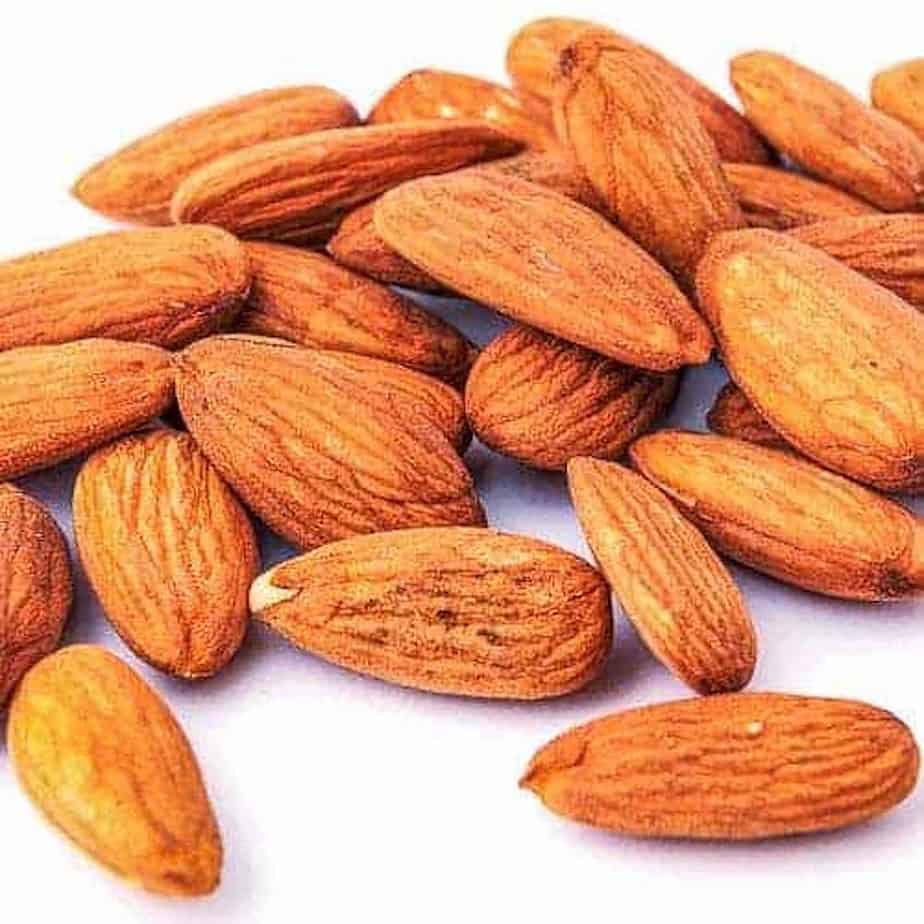
Modern Production Limitations
Almonds production on a small tree resembles the peach in flower and leaf characteristics but with dry fruit. Several forms of ornamentals have faced cultivation to turn into a cash crop. The drupaceous fruit is a nutlike stone or kernel.
It was once thought that almonds could grow successfully in peach-growing sections of the Southeastern United States. Owing to this reason for not working as a crop, the late spring frosts that come in. Along with other difficulties, they have caused the efforts to be abandoned commercially. The history of almond production for commercial cultivation in America has been in locations with dry heat climates in the West. Additionally, California almond trees yield more firewood than any other fruit tree.
The two chief sources of failure with the almond are the sterility of wide varieties without cross-pollination. Also, the extreme propensity of the tree for early blooming. The consequent destruction of the bloom or young fruit by temperatures below freezing. The almond is the earliest bloomer of our common fruit. It puts forth flowers sometimes in January, but the expected date is February 10 for the earliest bloomers in the warm part of California and April 1 for late bloomers.
Almonds Becoming The Dominant Crop In California
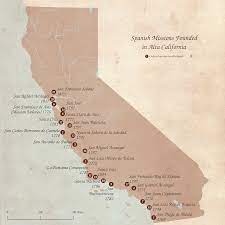
The earliest almond trees in the United States came from seeds. Their introduction was from Mexico and Spain when Franciscan missions were established in California between 1769 and 1823. These trees died after the abandonment of those missions. No further attempts at almond growing in the United States were made until 1840. Some trees brought in from Europe would plant in the New England States. The climate was too severe there that the attempt was not successful. In time, plantings would be made down the length of the Atlantic seaboard and into the Gulf States. But everywhere, the almonds exacting climatic requirements ruled it out of profitable production.
In 1943, some almond trees from the east coast would plant in California and developed into the present industry. California is now the only crucial almond-producing state in America. Provided that almonds only grow in California in significant numbers.
The world commercial almond crop for 1965 was 129,400 short tons shelled basis, virtually the same as the record high crop of the previous year. Imports of U.S. almonds in 1965 were negligible. Only 140 tons of shell, one ton of in-shell, and 73 tons of blanched.
Almond orchards in California provide a living for more than 6,000 growers and their families. They grow in the central valleys, watered by the Sacramento and San Joaquin Rivers and their tributaries.
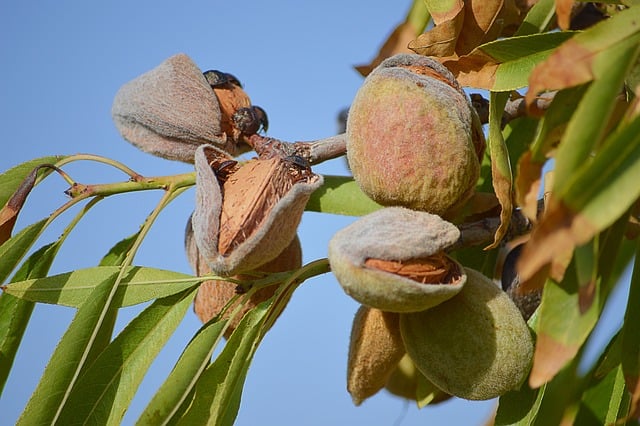
Almonds Made Their Premier In 1854
In California’s history of almond production, the first time the commercial almond was displayed was in 1854. Only four years after California became a state of America. The first domestic almond made its public bow at a California fair in 1854. During the half-century following, growers learned about suitable locations and varieties through trial and error. They learned about the sensitivity of almonds to frost, blight, insect pests, moisture control, harvesting methods, procedures for getting the nuts to market, and, more recently, about processing and products.
Orchardists, notably A. T. Hatch of Suisun, undertook to improve production by scientific cross-pollination. Subsequently, three leading varieties would grow in California: the Nonpareil, Ne Plus Ultra, and IXL. These are Hatch varieties. It took many years to get orchards from the initially favored hillsides to escape frosts. Then move them into the valleys where they could more easily receive irrigation.
California Almond Growers Exchange
Significantly, marketing became a problem. Many growers were lost trying to find a way of marketing through individual initiatives, pools, and cooperatives. In 1910, a group of growers representing nine small pools with 230 members met in Sacramento. This early group would form the California Almond Growers Exchange Federation. J. P. Dargitz was the first manager when the total production of unshelled nuts was 2,000 tons.
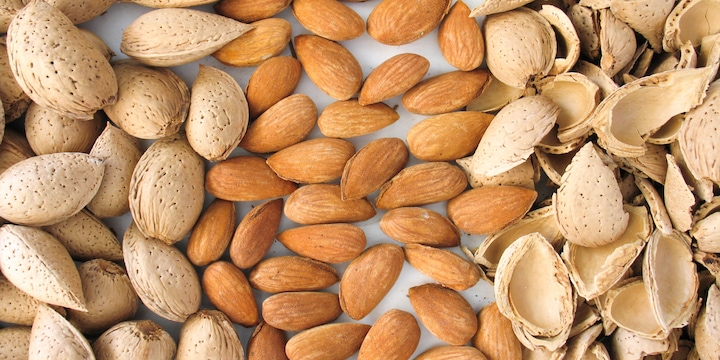
Almonds sell in the shell almost entirely while combining local cooperatives. Foreign growers supplied shelled almonds to the American market, themselves at the mercy of speculators and exporters.
Twelve years later, when the U. S. tariff on imported shelled almonds was increased, eventually, the Exchange went into the business of shelling the almonds. With chaotic conditions eliminated and almond prices stabilized, developing a strong domestic almond industry became a reality. Such a program greatly benefited the end-user, the manufacturer, and the suppliers. Over the long history of almond production, The Exchange increased the popularity and versatility of almonds. In detail, it did this through continuous efforts and specific steps to encourage consumers to develop, by 2019, a $4.9 billion Industry. Almonds are California’s fastest-expanding tree crops. Several times shown phenomenal spurts in planting. It has expanded nearly three-fold in 15 years.
In 1962, the California Almond Growers Exchange built a three-story cold storage. Also, a manufacturing warehouse that refrigerated 4,000 tons of shelled almonds.
This label was adopted in 1910 as a simple, easy-to-recognize trademark to appear on packages and bags. Ultimately, utilizing millions of dollars makes this label known as a mark of the highest almond standards and quality to manufacturers and consumers alike. The grower-owned organization expanded to include both shelled and unshelled almonds.
Different Varieties Grown In The History Of Almond Production
As equipment and processing methods improve, ever-higher quality standards will establish themselves. The introduction of mechanical test-grading of each member’s delivery was in 1931. Growers would have encouragement to concentrate on a few proven varieties instead of the 70 or more varieties grown commercially for many years. Seven have the consideration to meet the market’s exacting requirements. Nonpareil, IXL, Noplus, Peerless, Drake, Mission, and Jordanolo are the most satisfactory. Consequently, the Exchange increased about 20 times its original size to a membership of 4,500 grower-owners by 1970. Producing about 70% of the nation’s commercial almond crop.
Over the years, hundreds of varieties of almonds would grow. European varieties would have been used exclusively in the earliest California orchards.
Nearly all of these imports have their production abroad. The consideration is that they are inferior quality nuts that grow in California. Spain has considered the only place that can grow an almond better than California.
The Jordan Almond, considered the best European nut, always fails here. It is a shy bearer, susceptible to brown rot, blooms early, and the nut is difficult to crack. As a result of these current commercial varieties, they would develop from seedlings. Currently, they grow in California.



